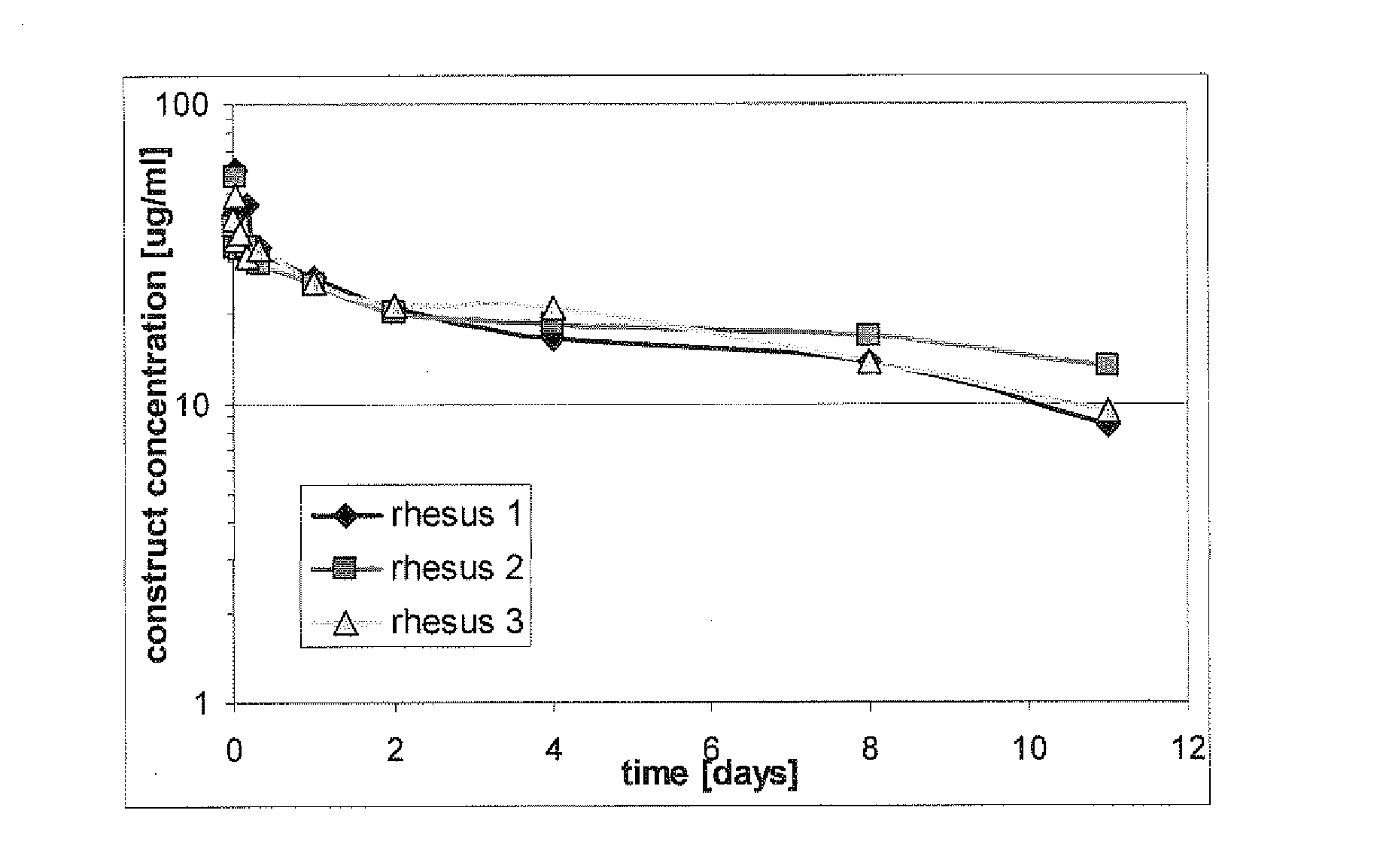Serum albumin binding proteins with long half-lives
a serum albumin and protein technology, applied in the field of amino acid sequences, can solve the problems of deficient serum albumin binders for which half-life data in primates is known in the art, limited half-life in vivo in primates, and short serum half-lives of serum albumin binders, so as to prolong the serum half-life of therapeutics attached, reduce the frequency of administration, and reduce the effect of dosag
- Summary
- Abstract
- Description
- Claims
- Application Information
AI Technical Summary
Benefits of technology
Problems solved by technology
Method used
Image
Examples
example 1
Identification of Serum Albumin Specific Nanobodies
[0178]The albumin specific nanobodies were identified from a llama immunized with human serum albumin. Screening of individual nanobodies was performed by ELISA using human, rhesus and mouse albumin, yielding a panel of nanobodies cross-reacting with the serum albumin of various species.
example 2
Biacore Analysis
[0179]Binding of nanobodies to serum albumin was characterised by surface plasmon resonance in a Biacore 3000 instrument. Serum albumin from different species was covalently bound to CM5 sensor chips surface via amine coupling until an increase of 250 response units was reached. Remaining reactive groups were inactivated. Nanobody binding was assessed at one concentration (1 in 20 diluted). Each nanobody was injected for 4 minutes at a flow rate of 45 μl / min to allow for binding to chip-bound antigen. Binding buffer without nanobody was sent over the chip at the same flow rate to allow spontaneous dissociation of bound nanobody for 4 hours. Koff-values were calculated from the sensorgrams obtained for the different nanobodies. The nanobodies tested are ranked according to koff-values, see Table IV below:
TABLE IVClassHumanRhesusMouseCPMP6A8PMP6A8PMP6B4CPMP6B4PMP6B4PMP6A8BPMP6A6PMP6A6PMP6A6BPMP6C1PMP6C1PMP6C1APMP6G8PMP6G8PMP6G8APMP6A5PMP6A5PMP6A5DPMP6G7PMP6G7PMP6G7
[018...
example 3
Half-Life in Rhesus Monkeys
[0183]The pharmacokinetic properties of a trivalent bispecific Nanobody construct comprising the humanized anti-human serum albumin Nanobody ALB-8 (SEQ ID NO: 62) were investigated in rhesus monkeys. On day 0, three monkeys received 2 mg / kg of the construct in. Plasma samples were taken from the monkeys upon administration and on days 1, 2, 4, 8, 11 and 14 following administration (as set out below) and were analyzed to determine the pharmacokinetic profile. The PK profiles in all monkeys were similar, with a calculated half-life of approximately 10 days. This calculated half-life is in the range of the presumed half-life of albumin in rhesus monkeys.
[0184]Three rhesus monkeys were acclimatized 4 weeks prior to the study for acclimatization. On day 0, the monkeys received 2 mg / kg of the construct via an intravenous infusion into the vena cephalica of the right or left arm using indwelling catheters and an infusion pump. The dose was administered as a slow ...
PUM
| Property | Measurement | Unit |
|---|---|---|
| pH | aaaaa | aaaaa |
| pH | aaaaa | aaaaa |
| pH | aaaaa | aaaaa |
Abstract
Description
Claims
Application Information
 Login to View More
Login to View More - R&D
- Intellectual Property
- Life Sciences
- Materials
- Tech Scout
- Unparalleled Data Quality
- Higher Quality Content
- 60% Fewer Hallucinations
Browse by: Latest US Patents, China's latest patents, Technical Efficacy Thesaurus, Application Domain, Technology Topic, Popular Technical Reports.
© 2025 PatSnap. All rights reserved.Legal|Privacy policy|Modern Slavery Act Transparency Statement|Sitemap|About US| Contact US: help@patsnap.com


